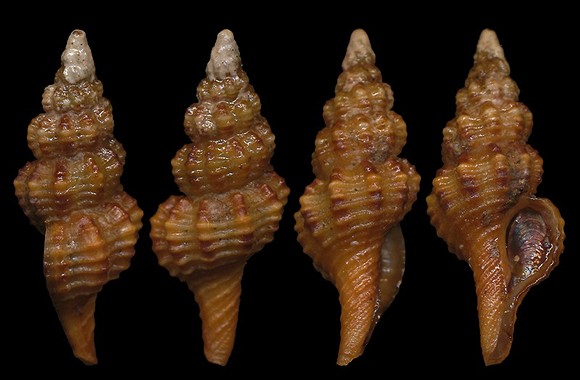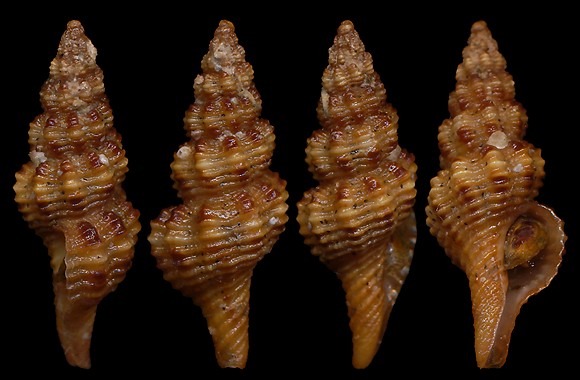(Buzzurro & Russo, 2008)

Predator in shallow water, in rocky environment.
Synonym: crassus Pallary.
« Shell turreted, lengthened, very thick. Whorls 8, convex, joined together by a depressed suture. Sculpture made of numerous (13 in the last whorl) strong longitudinal costae crossed and covered by close-set, slightly oblique cords. Siphonal canal elongated, starting straight, then bent leftward and backward. Aperture oval; margins in the continuation of the parietal callus. Columella arched, twisted inside. Labial folds. General colour yellowish brown, with two darker red-brown spiral bands. […] This form has some affinities with Fusus rostratus; but it differs in its more numerous longitudinal folds, its shorter siphonal canal, its darker colour, its aperture more elongated, less rounded, etc. » – P. Pallary: “Diagnoses de quelques coquilles nouvelles provenant du Maroc”, J. de conchyliologie vol. 49, p.314.
2m deep, on rock, Águilas, Murcia, S. Spain. 16mm.

« F. cretellai is known from two populations: originally described from the Atlantic coast of North Morocco, Tangier (type locality), and the other one from southern Spain (from the Mediterranean, from Fuengirola, Algeciras and Getares and from the Atlantic coast of Cape Trafalgar). F. cretellai from north Morocco differs from specimens from southern Spain by the somewhat larger shell size […], the comparatively broader shell […], the shorter spire, the thicker shell, the inflated body whorl, the more close-set axial ribs […]. But the differences between the two populations are not consistent and linking specimens exist. » – Hadorn & al.: “A new Pseudofusus from the Algarve”, Iberus 27, 2009, p.124-127.
3m deep, under stone, Águilas. 15mm.